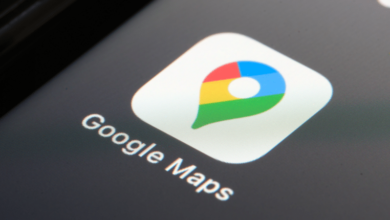Performance Max: Time to Rethink the For vs. Against Debate?

▼ Summary
– Performance Max (PMax) is a polarizing Google Ads campaign type, offering automation and cross-channel reach but reducing advertiser control over targeting and bidding.
– Launched in 2021, PMax consolidated Smart Shopping and Local campaigns, quickly becoming mainstream, accounting for ~82% of retail Google Ads spend by 2024.
– PMax appeals to resource-strapped teams due to its simplicity and efficiency, but lacks transparency in reporting and raises brand safety concerns for some advertisers.
– Google has improved PMax with added features like search term insights and brand exclusions, but opinions remain split due to the trade-off between automation and control.
– The decision to use PMax depends on business goals, resources, and risk tolerance, with a hybrid approach (combining PMax with traditional campaigns) often being optimal.
Performance Max campaigns have sparked heated debates in the PPC world, with marketers divided on whether they deliver real value or sacrifice too much control. Since its 2021 launch, Google’s automated solution has reshaped digital advertising by merging multiple ad formats into a single, AI-driven campaign. But is it right for every business? The answer isn’t black and white, it depends on goals, resources, and risk tolerance.
The Evolution of Performance Max When Performance Max replaced Smart Shopping and Local campaigns, it marked a turning point in Google Ads. By 2024, it dominated retail advertising spend, proving its staying power. Early adopters faced transparency issues, often calling PMax a “black box” due to limited reporting. Over time, Google introduced improvements like search term insights and brand exclusions, but skepticism persists. The core trade-off, automation versus control, remains unchanged.
Why Some Advertisers Embrace PMax For teams with limited bandwidth, Performance Max simplifies cross-channel advertising by handling placements across Search, Display, YouTube, and more. Case studies highlight success stories, like a travel company achieving a 15x higher conversion rate. Small businesses benefit from its plug-and-play setup, while larger brands use it to test new markets quickly. Google’s heavy investment in PMax also suggests it’s here to stay, with continuous updates refining its capabilities.
The Flip Side: Concerns That Keep Advertisers Wary Critics argue that PMax strips away too much control, leaving advertisers in the dark about where budgets are allocated. Limited search query data and blended channel reporting make optimization challenging. Brand safety is another pain point, automated assets and broad targeting can clash with strict guidelines. Some advertisers report PMax cannibalizing existing campaigns, though Google has clarified how auctions prioritize ad types. Results vary widely, with some seeing dips in performance compared to manual campaigns.
Finding the Right Balance Rather than an all-or-nothing approach, a hybrid strategy often works best. PMax can complement traditional campaigns, handling broad retargeting or exploratory efforts while manual setups manage high-priority keywords. Businesses must weigh factors like:
- Goals: Broad reach vs. precision targeting
- Resources: In-house expertise vs. reliance on automation
- Data needs: Full transparency vs. aggregate reporting
The Bottom Line Performance Max isn’t inherently good or bad, it’s a tool whose effectiveness depends on context. Testing remains key. As Google refines the platform, early drawbacks may fade, making PMax viable for more advertisers. Those who dismissed it in 2021 should revisit its potential today, while enthusiasts should stay vigilant about performance nuances. The debate isn’t about picking sides; it’s about strategically integrating PMax where it aligns with business objectives.
(Source: Search Engine Journal)





